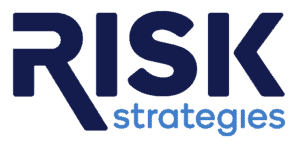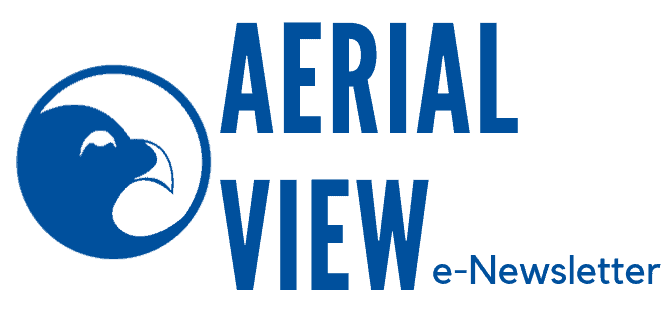DECEMBER 2022
Better Benefits, Better Rates
Since open enrollment and renewal season is upon us, your employee benefits are probably weighing on your mind. Maybe you have a fully insured renewal sitting on your desk with an unexpected increase. Perhaps you’re thinking about all the rising costs you’re facing due to inflation (with medical inflation lagging not far behind). Appropriately, you may be looking for ways to cut spending, and transforming your employee benefits plan could help you tackle a significant source of it.
When we think of health insurance, most immediately think of old-fashioned plans. You pay a premium to an insurance company, and it handles your claims. That sounds straightforward, but it’s not the only way to finance your benefits, let alone the best. While it may seem counter-intuitive for small and medium-sized businesses to think about self-insurance, we have developed cutting-edge risk-management practices that make it not only a possibility but a positively necessary solution.
In light of these challenging economic times, with inflation rates rising and the looming threat of recession, any chance to save money on health benefits deserves a close look. For many employers, employee benefits are one of the largest line-item expenses. However, you can combat these rising costs without sacrificing the quality of care that your employees receive. ParetoHealth’s solution, which I will explain in detail in this article, saves new members an average of 7.5% on total healthcare costs during their first year alone, and the savings grow with time.
The fact of the matter is the companies that are large enough to self-insure almost always do. 63% of all U.S. employers self-insure. This includes 94% of all businesses with 5,000 or more employees and 56% with 200–999 employees. An increasing number of employers with fewer than 200 employees are climbing on the self-insurance bandwagon. These companies ditched the traditional fully insured model, electing to pay claims themselves rather than overpay insurance premiums.
While traditional thinking suggests that bigger businesses are more able to self-insure because they have more capital at their disposal, small businesses shouldn’t count themselves out of the self-insurance space and its invaluable benefits. Additional layers of risk management may be required, but that doesn’t complicate the process. In fact, the opposite is true.
Group captives are the superior alternative to fully insured and individual self-insured models. Captives are insurance companies that are owned by their insureds who share risk to take control of their healthcare dollars and realize opportunities for savings. Group benefits captives optimize self-insurance for small and mid-sized employers.
When ParetoHealth was formed in 2011, we wanted to disrupt the broken insurance industry and enable small and mid-sized employers to take control of their benefits and healthcare spending. Since then, we have grown to become the nation’s largest health benefits captive, with more than $800 million in stop loss premium under management, 1,800 members and 600,000 covered lives. Pareto captives are wholly owned by the members, and our sole purpose is to advance the interests of the entire captive. Our members have reaped great rewards from this method of benefits financing. The proof is in the numbers: 97% of the businesses that join ParetoHealth renew with us each year.
Finally, we have more experience in this area than anyone else. We guide newly self-insured employers every step of the way with our turnkey cost management and individualized support, which is why so many IMARK members have chosen to join ParetoHealth.
But before we get ahead of ourselves, let’s go over the basic differences between fully insured plans, self-insured plans and captive insurance at ParetoHealth.
Fully Insured is Actually Just ‘Fully Deferred’
While fully insured plans offer the convenience of a regular payment schedule in the form of monthly premiums, these premiums often increase steadily, even following a year of relatively “good” claims experience, and sharply following a year with high claims.
For example, let’s say you pay $1 million premium but only have claims of $800,000 that year. Your insurance company keeps the difference as profit. Even though you were “profitable” for the insurance company, they hand you a 5% increase for the upcoming year. In a year with a lot of bad claims, you could get slapped with a 50%, 75% or greater renewal increase. A decrease in premium is unheard of.
Fully insured carriers hope you only look at the costs one year at a time, and too many short-sighted employers fall into that exact trap. They accept the relatively small renewal increase that comes after a good year and don’t bother to look for a better solution until disaster strikes. But it’s not a matter of if you have a bad year with unexpected claims. It’s a matter of when. Statistically, bad years happen about one in every five years. Fully insured plans don’t offer protection from annual changes in costs and volatility.
If you wait until a disastrous “bad” year strikes, you’ll be too late. The options available to you now may not be available then, at least not at the same price. And in the intervening years, those modest renewal increases will add up.
There’s more.
When you’re fully insured, you face restrictions on the plan design and receive little to no information on how your health care dollars are being spent. You don’t know what benefits your employees are and aren’t utilizing. As a result, you’re ill-equipped and unable to make informed decisions about reducing costs.
In addition, don’t be fooled into thinking that paying a premium effectively shifts all the risk onto the insurance company. Sure, you have financial certainty for the next 12 months. But after those 12 months, your insurance carrier can increase your premium based on your claims in that prior period. So, you aren’t transferring risk; rather, you’re just deferring it until next year. In short, to quote the adage, “the house always wins.”
Being Self-Insured on Your Own is Volatile and Risky
So, is self-insurance the better way? The answer isn’t that simple.
As a small to midsized employer, going self-insured on your own can be risky. There are fewer taxes and fees because you are not paying overheads to an insurance company. Instead, you pay your employees’ claims as they come in, and you don’t have to worry about overpaying premium. Payments vary based on claims which means budgeting for claims can be unpredictable, and a big claim can be catastrophic to your bottom line.
This can be mitigated by stop-loss insurance, a type of insurance that is designed to cover only very large claims or an unexpected influx of many smaller claims. However, as with fully insured policies, stop-loss policies can bring hefty renewal increases.
You’re also vulnerable to lasers. Simply put, a laser is a higher deductible issued when an individual is experiencing a higher claim year that will probably continue long term, such as someone with cancer or diabetes. In these cases, insurance carriers will set a higher deductible (laser) on that individual for at least the next year. This transfers the costs of those high, ongoing claims back onto the employer.
And while being self-insured gives you access to claims data, you might lack the expertise to make sense of it and form an effective strategy to reduce costs. You are unlikely to have access to cost containment programs and options that larger businesses do.
All of this means that you cannot take advantage of all the benefits available to you, and you’re taking on a huge amount of risk yourself. As a small business, if you have a cash surplus to pay your claims, you can make self-insurance work. But this often isn’t the case.
You have long-term goals for your business, so why not demand long-term goals and strategies for your employee benefit programs?
This is where the captive comes in.
For more information or to take advantage of this amazing program complete this form or contact:
Dee VanSchoick, Jr.
Managing Director
Risk Strategies Company
dvanschoick@risk-strategies.com
936-582-5205



